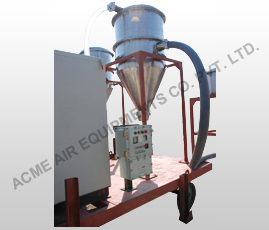Table of Contents
Manufacturers often face a relentless battle against dust, which can cause a myriad of problems, from health and safety concerns to environmental issues. The good news is that dust collection systems are here to help. In this article, we will explore the cost-effective benefits of dust collection systems and why they are essential for manufacturers.
The Importance of Dust Collection Systems
Dust collection systems play a pivotal role in manufacturing operations. They are designed to capture and remove dust and particulate matter from industrial processes. Without these systems in place, manufacturers may encounter numerous challenges, ranging from poor indoor air quality to equipment damage.
Health and Safety Benefits
One of the primary advantages of dust collection systems is their ability to enhance workplace health and safety. Airborne dust can pose serious health risks to employees, potentially leading to respiratory issues and other health problems. By removing dust at the source, these systems create a healthier working environment, reducing the likelihood of employee health problems and related downtime.
Cost Savings Through Dust Collection
Dust collection systems also bring about significant cost savings. While the initial investment in a dust collection system may seem daunting, the long-term benefits far outweigh the costs. These systems extend the lifespan of machinery by preventing dust-related wear and tear. They also reduce energy consumption, as equipment operates more efficiently in a clean environment.
Compliance with Environmental Regulations
Manufacturers are increasingly required to adhere to strict environmental regulations. Dust collection systems help companies meet these requirements by controlling emissions and preventing environmental contamination. Fines and legal repercussions for non-compliance can be steep, making dust collection systems a cost-effective solution.
Types of Dust Collection Systems
There are several types of dust collection systems to choose from, each with its unique advantages:
Cyclone Dust Collectors
Cyclone dust collectors use centrifugal force to separate dust from the air. They are efficient and suitable for a wide range of industries.
Baghouse Dust Collectors
Baghouse dust collectors use fabric bags to filter and collect dust. They are highly effective in capturing fine particles.
Cartridge Dust Collectors
Cartridge dust collectors use pleated filter cartridges to capture dust. They are compact and provide high filtration efficiency.
Wet Dust Collectors
Wet dust collectors use water to trap dust particles. They are ideal for explosive or flammable materials.

Factors to Consider When Choosing a Dust Collection System
When selecting a dust collection system, manufacturers should consider several factors:
Airflow Requirements
The system’s airflow capacity should match the specific needs of the manufacturing process.
Particle Size and Type
Different dust types require different collection methods, so it’s crucial to match the system to the type of dust produced.
Maintenance and Operating Costs
Understanding the ongoing maintenance and operational costs is essential to budgeting for the system.
Space and Installation
Consider the available space and installation requirements when choosing a dust collection system.
Installation and Maintenance Best Practices
To maximize the cost-effective benefits of dust collection systems, manufacturers should follow best practices:
Proper Ductwork Design
Efficient ductwork design ensures that the system captures dust effectively and maintains optimal airflow.
Regular Filter Replacement
Scheduled filter replacement is crucial to the system’s efficiency and longevity.
Monitoring and Control Systems
Implementing monitoring and control systems allows for real-time data and adjustments, ensuring peak performance.
Real-World Examples of Cost Savings
Several manufacturers have experienced significant cost savings through the implementation of dust collection systems. These success stories serve as proof that the initial investment pays off in the long run.

Conclusion
In conclusion, dust collection systems are not only essential for maintaining a safe and healthy workplace but also for achieving substantial cost savings and ensuring compliance with environmental regulations. The variety of systems available allows manufacturers to choose the one that best suits their needs, making the investment worthwhile.
Frequently Asked Questions About Dust Collection Systems
Dust collection systems can be tailored to fit various manufacturing processes. It’s crucial to select the right system based on the type of dust and specific requirements.
Filter replacement frequency depends on factors like the type of dust, system design, and operational hours. Regular inspections will help determine the optimal replacement schedule.
Yes, dust collection systems can often be retrofitted into existing facilities. An assessment of the facility’s layout and requirements is necessary to determine the feasibility.
Dust collection systems promote energy savings by maintaining a cleaner working environment, reducing equipment wear and tear, and improving overall machinery efficiency.
To select the appropriate dust collection system, consider factors such as airflow requirements, the type of dust generated, maintenance costs, and available space. Consulting with experts in the field can also be beneficial.



